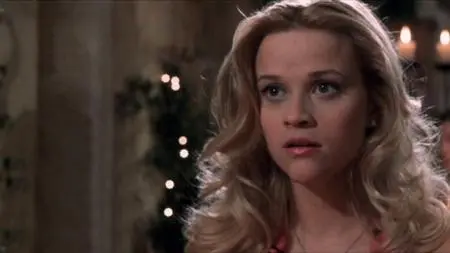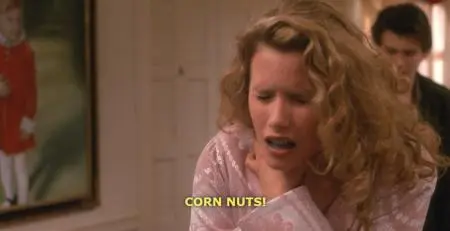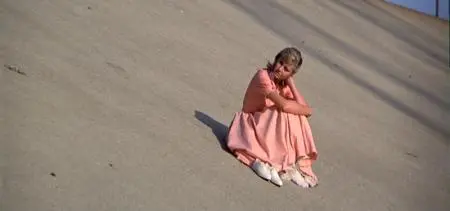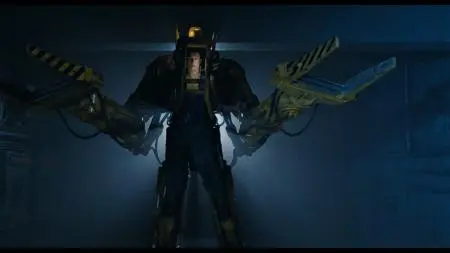Great art happens in the curves. Any hobbyist with a grasp of the rudiments can take a concept in a straight line but, whether it's classical ballet, comic books, Formula One or dressage, the measure of a true artist is how they master the turns.
Good screenplays are all about inventive, unexpected turns. Screenwriting gurus differ on how many there should be, what they should be called, and which page number they should show up on, but the fact remains that a screenplay should never travel from FADE IN to FADE OUT as the crow flies. That would be dull, predictable, and probably unreadable. Instead, a screen narrative should curve its way in and out of at least five distinct turning points, bending like Beckham’s qualifying goal against Greece in the 2002 World Cup.
Turning points have many functions within a screenplay. They define structure; change narrative direction, often abruptly; raise the stakes; heighten the pace; and prevent the narrative from drifting too far in one direction. They add crucial va-va-voom. A screenplay with powerful turning points is dynamic. One without is not.
Nonetheless, turning points shouldn't be inserted simply because a certain page count has been reached and the writer feels obliged to switch direction. There should be a plausible reason for every bend in the road. The best twists manage to be both unexpected and entirely believable - no easy trick to accomplish when constructing a plot.
Because: Physics. And Balls.
Think of a screenplay narrative as a body in motion. It has mass – we describe screenplays as “light and fluffy” or “ weighty”. After an initial application of force, it moves in a given direction at a variable speed. It will travel in that direction until it hits another object, or loses momentum and grinds to a halt.
Momentum, as you will remember from high school physics, is “mass in motion”. Momentum comes from two variables, mass x velocity – how big is it, and how fast is it moving (and in what direction)? Momentum is the force that keeps your narrative rolling rolling rolling. However, there are all kinds of factors in play that decrease momentum as time passes — friction, resistance, pressure, even plain old gravity, dragging at your narrative until it comes to a full stop. Even if you launch your story with a really powerful push, that initial impetus will only send it so far in a single direction.
Which is where turning points come in. They are caused by additional applications of force. It's necessary to apply extra force periodically to keep your story bowling merrily along as well as provide changes in direction. But, a screenplay that moves at a constant pace can get boring. Ideally, the external forces applied throughout the course of the narrative will be of an increasingly powerful nature, until it’s hurtling towards the climax at white-knuckle velocity.
Physics lessons often use billiard balls as examples, and that analogy works here too. As a writer, your job is to apply carefully calculated forces until your body in motion has reached its destination, i.e. hit one ball with another, increasing momentum through a series of carefully calculated collisions, until it’s zig-zagged its way into the pocket.
Alternatively, think of your turning point as coming in like a wrecking ball (thanks, Miley!). The mass and velocity of the wrecking ball are up to the writer. A small, slow-moving wrecking ball may not do much obvious damage on initial impact, but it could cause a series of imperceptible cracks that, down the line, will make a skyscraper crumble. A huge, speeding wrecking ball will smash the existing state of affairs into tiny pieces, leaving the way open for immediate dramatic reconstruction. It all depends on the story you want to tell, so calibrate the collision that causes your turning point accordingly.
The Inciting Incident
This is the initial application of force that sets the story in motion, the phone call/explosion/one night stand/jailbreak/job offer that puts your protagonist on their path to the climax. Tzvetan Todorov suggests that all narratives spring from disequilibrium. The inciting incident’s main function is to trigger that disequilibrium. It should be an open-ended event, one which disrupts, creates chaos, or sets up a volatile situation in desperate need of resolution — the opening break when the cue ball sends the racked colors ricocheting in every direction.
At the beginning of Legally Blonde, Elle’s vision of her future as the loyal wife of a blue-blood who has vowed to be a Senator “by the time I’m thirty” is shattered by the high-velocity wrecking ball line of dialogue “I think we should break up.” In that moment, life as she knows it is over, and she is immediately forced to travel in a new direction: Harvard Law.

By contrast, the inciting incident of The Hangover is a barely noticeable click. It occurs during the “He's getting very close to my shaft” scene (which opens the present time narrative), when a barely-clad Alan says “If you wanna go to Vegas without me, that’s totally cool, you know?”. Without knowing what he’s doing, Doug insists that his brother-in-law-to-be joins the bachelor jaunt, and inadvertently seals his doom — although the ramifications of his invitation don’t become apparent for quite some time. Groomsmen Stu and Phil are merely bro-grade crazy, and a night in Vegas with them isn’t likely to result in anything worse than embarrassment. Alan, on the other hand, is genuinely insane, and it’s his presence that triggers def-con Chaos.
The inciting incident doesn’t necessarily happen to, or in the presence of, the protagonist. They may be entirely unaware that life-changing events have been set in motion, or the events may have a direct impact on the antagonist.
The inciting incident doesn’t even have to take place on screen. It should, however, be connected to the present time of the narrative. You may want to elaborate on a crucial piece of non-linear backstory in a prologue (as in the “We fucked up” opening tease of The Hangover), but you still need the inciting incident to initiate your present time sequence. This is where it all begins.
As the inciting incident initiates movement and direction, it’s good to see it happen within the first five pages — until the inciting incident has occurred, it’s unclear what your story is about and where it’s going. Back in the day, screenplays could afford to spend ten pages establishing circumstances and setting before kicking off the story, but the wham-bam tastes of modern Hollywood look for instant cues. For instance, the opening sequence of Casablanca goes to great lengths to establish the historical context (the map showing the refugee route out of Paris to North Africa), the political atmosphere (the pickpocketing, and arrests of anyone without papers), before winding up at the inciting incident (Ilsa’s arrival at Rick’s Cafe). This leisurely approach might be unlikely to find favor today.
Getting On Track: The First Bend in the Road
Once the inciting incident has propelled the narrative in an ongoing direction, there’s a lot of who/what/why/where/when to lay down in the story-telling — the set up. Most importantly, the protagonist, the central body in motion, establishes who they are and where they’re headed — even if, initially, they’re traveling in an irrelevant or even downright wrong direction. There’s a whole new world to introduce to the audience, which is why this set-up period tends to be quite slow moving.
Once the facts of the situation are established, however, it’s time to kick it up a notch. The protagonist, who may have been prevaricating (Refusing The Call, etc), or gathering information, or simply getting lost, may be starting to lose momentum. They need a new impetus. The writer should apply a new dramatic force, introducing a character or event that will come into collision with the protagonist, changing their direction and increasing their velocity. This first major collision often occurs in the face of a warning, and can transfer enough energy to spark a subplot.
In Robocop (the 1987 version), that force comes in the form of Clarence Boddicker and his henchmen, when they corner the unfortunate Murphy in an abandoned warehouse, and pump him full of bullets. This has a significant impact on Murphy — he’s dead — and forces his life to take a very sharp turn as his remains are reconstructed as RoboCop. He’s now traveling at a very different speed, and, importantly, is on track for payback, although there are a few more twists and turns to navigate before he will face Boddicker again.

In Heathers, this turning point comes when Veronica serves her best friend “a wake-up cup full of liquid drainer”, killing her instantly. Up until that point her flirtation with the new bad boy in town, J.D., has been all snark and al fresco sex. Murder marks a significant point of no return. In the moment when Heather Chandler crashes lifeless through a glass coffee table, the consequences of hanging out with a teen psychopath get suddenly very real (“I’m going to have to send my SAT scores to San Quentin instead of Stanford!”). Veronica has to change direction fast in order to survive, colluding with J.D. on a fake suicide note to cover up their crime. It’s not a direction she’s comfortable with, however, and she’s a barely-willing co-conspirator. Once again, this turning point puts her on track for her final confrontation with J.D., and the moment when she finally gets “cool guys like you out of my life”.
The Mid-Point Reversal
It’s all too easy for the mid-section of a screenplay to lose momentum. The protagonist is heading towards her goal but can’t get there too quickly or easily otherwise there will be no movie. She should be evolving through a series of challenges, overcoming obstacles of increasing size, but all too often the pace becomes plodding and outcomes are predictable. The writer and the characters get stuck in the mud. The audience are familiar with the narrative world and the characters, and may need something new to renew their interest in what’s happening on screen.
The mid-point reversal is a way of fixing all these issues. It should be generated by a powerful collision, big enough to send the protagonist spinning 180º and jolt the audience awake. If the inciting incident provides the main impetus for the first half of the screenplay, the mid-point reversal gives the narrative a whack that will give it the momentum it needs to reach its final destination. It should also start a countdown clock ticking, to emphasize the greater speed at which events are moving.
The mid-point reversal can come at the climax of a central action set piece, such as a battle, dance-off, chase or, as in Edward Scissorhands, a bungled robbery. It could involve the sudden death of an ally, or the discovery of betrayal, or an entirely unexpected development in a case, as when John Doe turns himself in at the police station in Se7en. It should be shocking and hit hard — the mid-point of Titanic occurs when an iceberg slams into the side of the ship. It should change everything.
One of the best-known mid-point reversals occurs in Alien. The first half of the movie is slow-moving and spooky. The crew of the Nostromo are following orders, bitching about their contracts, performing maintenance tasks, and conducting a vague exploration mission on the surface of a nearby planet. No one hurries. Other than a couple of startle moments (including the face-hugger attaching itself to Kane’s face) the narrative, although purposeful, is plodding. It’s atmospheric, intriguing, but the action doesn’t move any faster than Kane, Dallas and Lambert stumbling over the rocky surface of the planet in their space suits.

All that changes in a heartbeat. The creature bursting from Kane’s chest raises all the stakes, immediately. It transforms the movie from a moody 1970s discourse on contract workers rights and corporate conspiracy in the late 21st century into a full-on monster hunt. No one mentions their bonus again. They’re all too busy trying to stay alive. This turning point also foregrounds Ripley as the main protagonist. She’s been suspicious of the whole situation from the start — what woke Mother up, the true nature of the beacon signal (“It doesn’t look like an SOS… it looks like a warning”), Ash’s glib excuses — and in that moment her instincts are justified. It’s time for her to step into the spotlight and bring her best game against the rampaging xenomorph.
The Turn For Home
The mid-point reversal can often send the protagonist flailing out of control. While she is likely to discover who she really is and what she really wants during the resultant tailspin, she many need a tap in the right direction to send her speeding towards the final showdown. It’s a long shot, but she might just make it. This penultimate push delivers the final boost of encouragement and corrects her if she’s gone off course. This application of force can be quite minor (a gently remedial nudge) or a major kick in the pants.
Sometimes it’s an accidental tip-off. In Silence of The Lambs, Clarice is following up on some loose ends in the Buffalo Bill case, far from (she thinks) the centre of the action. She’s questioning a business contact of the first victim when a Death’s-head Hawkmoth flutters into view. The realization hits her that she’s got her man. She also realizes she must go in alone to save Catherine Martin. If she waits for back-up, Gumb is likely to kill his prisoner. Throughout the investigation, Clarice has been focused on the victims, not just the killer, and the possibility of saving one launches her towards the terrifying climax of the hunt for Buffalo Bill.
In Grease, Sandy watches Danny drive to victory at Thunder Road. She loves him, but until this point she’s wanted him to to be something he really isn’t, the perfect dreamboat she met at the beach. As he guns ‘Greased Lightning’ down the concrete bed of L.A. River, she’s hit with the realization that brave and loyal T-Bird Danny Zuko is the one that she wants, flaws and all. And she’d better shape up — with a little help from Frenchie.

The Climax
Whether it’s with a kiss, a punch, a bullet or an atomic bomb, the protagonist should collide with her final target with an almighty bang. This time, she’s riding the wrecking ball. And she should hit the bullseye with precision, rather than smacking into the general vicinity. In the frenzy of a late-stage movie narrative, full of gunfire, explosions, collapsing buildings or rioting teens, it’s easy to lose sight of exactly what the protagonist set out to do, or to gloss over the single action or event that means the job is done, story over, and everyone can go home. Without that precise kiss/punch/trigger pull, there’s no definite closure, which is very unsatisfying for the audience. This final point of collision should seal the deal, and often involves a face-to-face confrontation between the protagonist and antagonist.
This final impact should absorb the built-up momentum, and, if it doesn’t actually halt the action in its tracks, should remove the need for onward motion. It’s over. There’s no need. The screenplay might dribble away remaining momentum over a couple of pages of epilogue, but nothing more is required. The body in motion of the narrative should, once more, become a body at rest.
Often, this final collision involves a burst of action, a last, unexpected obstacle to overcome before closure is achieved. It can be a minor moment, one that acts as punctuation, the period at the end of the last story sentence. In the closing sequence of Ferris Bueller’s Day Off, Ferris realizes he has five minutes to make it back to his sick-bed before his parents get home. He races through his neighbors’ back yards, against the clock, and against his vengeful sister, Jeanie (with a police car in hot pursuit). Breathless, with seconds to spare, he makes it to his back door only to be confronted by his adversary, Ed Rooney, who has been lying in wait (“Goddamn you, you little bastard, I’ve got you right where I want you… So, how would you feel about another year of high school?”).
Given the trouble Ferris has caused Rooney, and that Rooney has been on to Ferris’s subterfuge almost from the top, the story wouldn’t be complete without a final face-off between the two. Partly because Ferris has the luck of the Devil, and partly because she too has a score to settle with Rooney, salvation comes in the form of Jeanie. While she’s actually the one to deliver the death blow to Rooney, Ferris can run upstairs to his bedroom knowing the Dean of Students won’t be bothering him again. The loose end is securely tied off.
At the end of Aliens, the stakes are higher than a schoolboy’s reputation. Once again, the protagonist thinks she’s almost home. She’s reached the Sulaco with Newt, and is exchanging lines of dialogue like “It’s over”, “We made it”, when the stowaway alien queen rips Bishop in two.

It’s most definitely not over until Ripley has climbed into the exosuit cargo loader and gone womano-a-womano with the queen, hammering her nemesis until the creature is forced screeching out of the airlock. Only then is Ripley done and this installment of the story has come to an end. She’s earned her right to be a body at rest, in peaceful hypersleep — until next time.
Real life is a ‘this then that’ narrative, a series of haphazard vignettes that make little sense when sequenced together. We don’t know where our journey is headed, or how long we’ve got till we’ve reached the end point. We’re assailed, daily, by random opposing forces involving us in a series of collisions, some of which propel us forward while others send us tumbling back. We don’t always notice crucial turning points, at least not until they’ve disappeared from the rear view. Amidst all this Brownian motion we crave order, progress in straight lines with elegantly executed turns that happen for solid reasons. A good screenplay offers us just that. Art should aim to be an improvement on life.
The examples I offer are all from older movies, so as not to be too spoiler-y. However, there are some wonderful recent screenplays that execute their turns nigh-on perfectly. On current release, Blue Ruin subjects its protagonist, Dwight, to some downright nasty collisions that change (and relentlessly keep changing) the course of his life until he finds closure. From last year, Frozen, Blue Jasmine and Dallas Buyers Club threw some major curveballs at their protagonists. The Dark Knight and Hunger Games trilogies turn, turn, turn with considerable sophistication. Share your recommendations for elegantly written turns (without giving away crucial plot details) in the comments.

About the author
Karina Wilson is a British writer based in Los Angeles. As a screenwriter and story consultant she tends to specialize in horror movies and romcoms (it's all genre, right?) but has also made her mark on countless, diverse feature films over the past decade, from indies to the A-list. She is currently polishing off her first novel, Exeme, and you can read more about that endeavor here .







